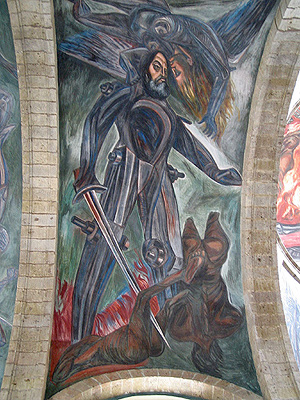To help you understand how spatial diffusion works, you will take an artistic journey through the period of Spanish Exploration in the New World. The purpose of this lesson is to identify the evidence of Spanish Exploration and analyze its impact on Mexico and eventually, all of Latin America.
During the 1920's and 1930's, gifted Mexican artists, Diego Rivera and Jose Clemente Orosco, created murals that depicted the history of Mexico. Below are portions of some of those murals. As you look at the murals, think about the influences that the Spanish had on the Aztecs and find examples of spatial diffusion.
Click each image below to learn more about the artist.
![]()
This next painting is Cortes by Jose Orosco and it depicts the Spanish conquistador (conqueror) Hernan Cortes. The Aztecs did not have iron weapons so Orosco created this painting from the Aztec perspective, who would have viewed someone wearing a suit of armor as strange. The hole in Cortes' chest represents his heartless treatment of the Aztecs.

Source: Cortes, Jose Clemente Orozco, All-Art